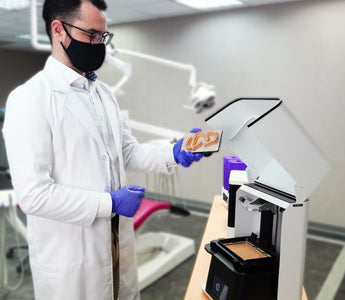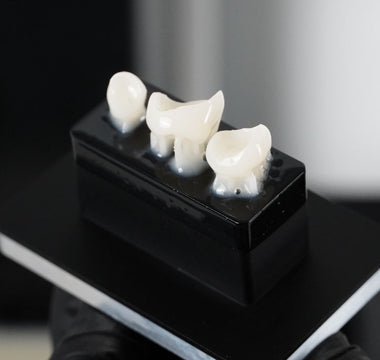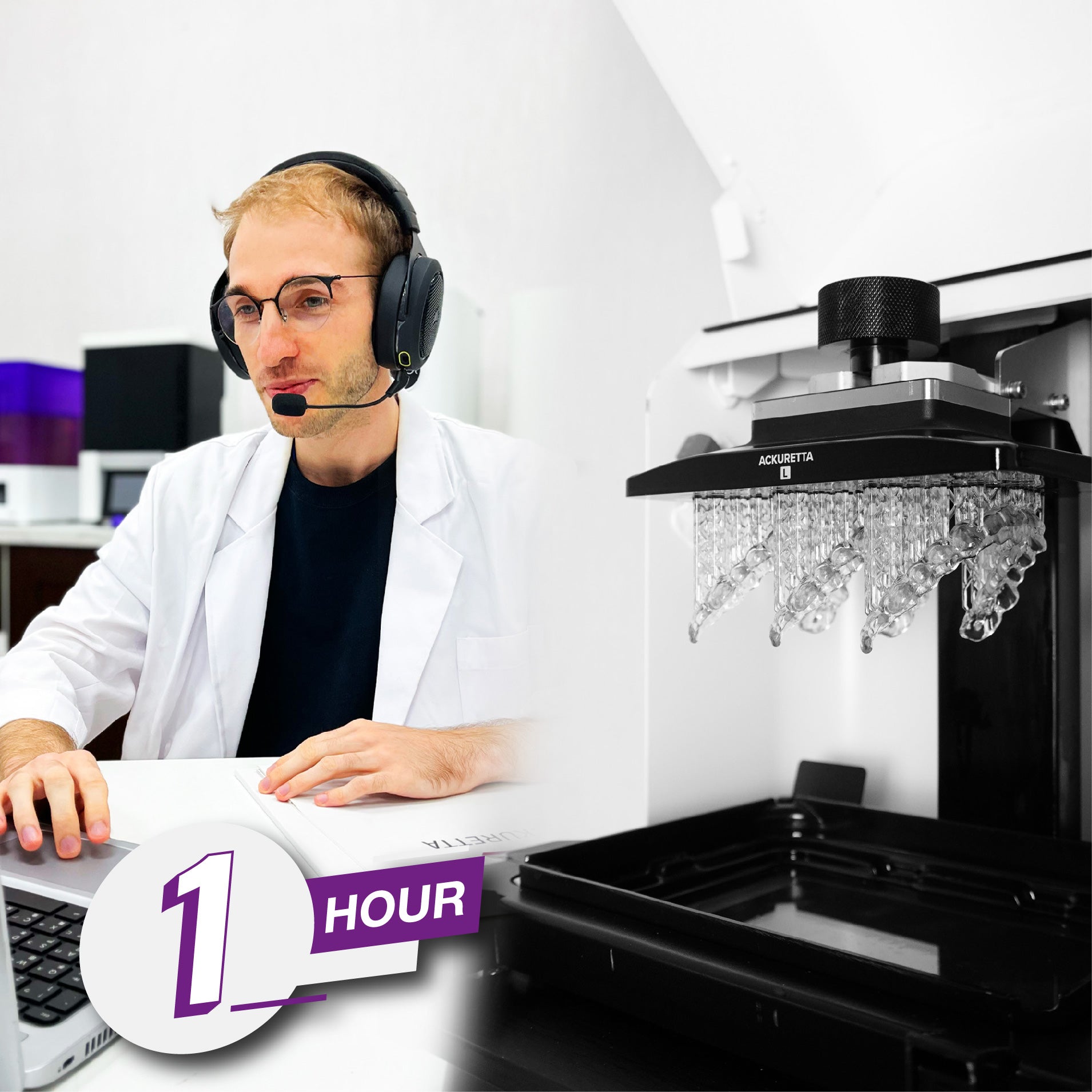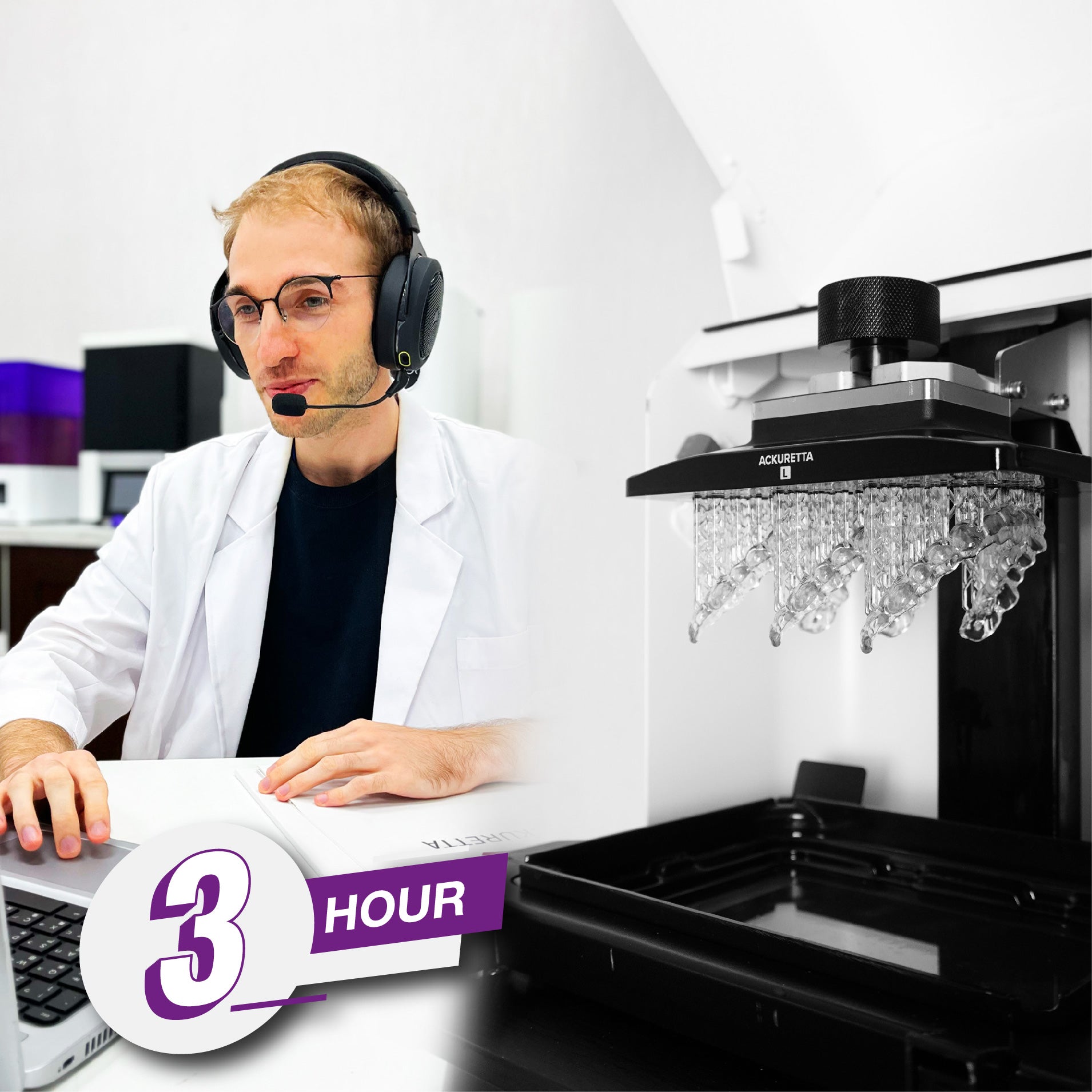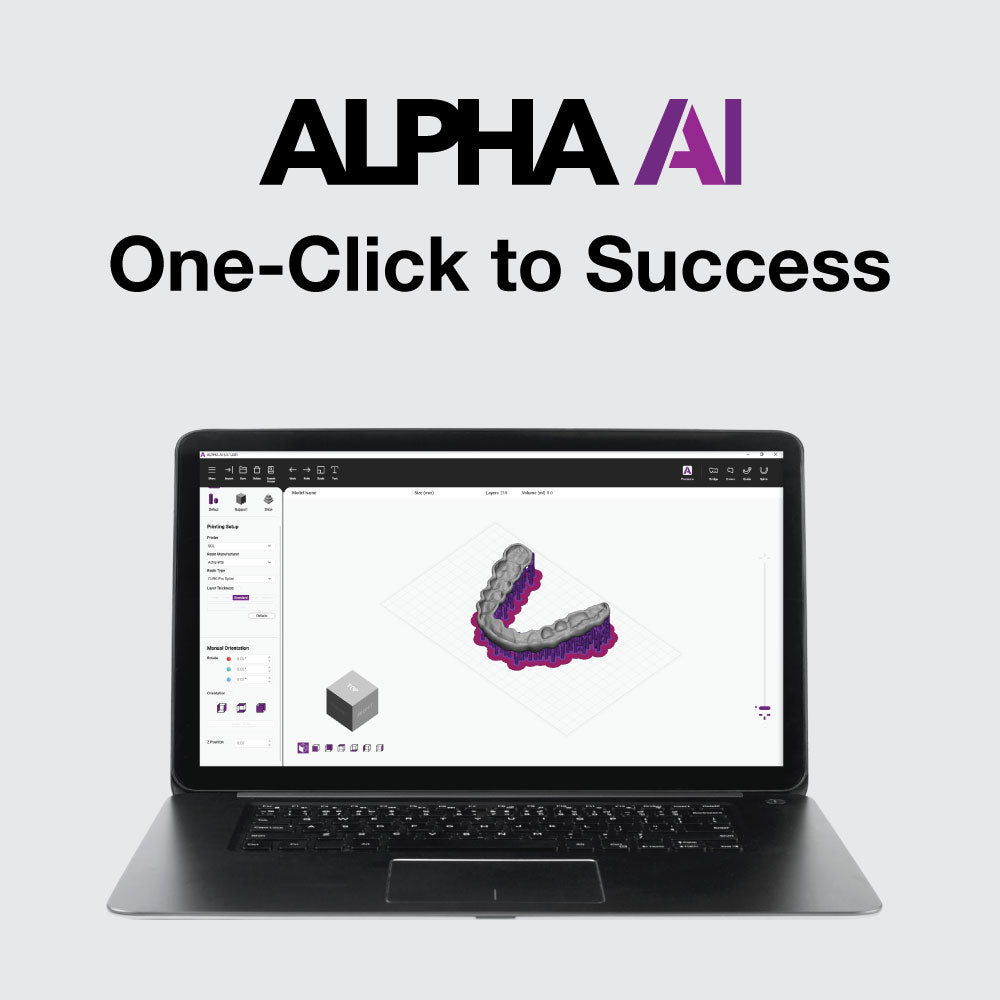6 Reasons for Dentists to Start 3D Printing Today
in collaboration with Dr. Schafer, Owner and Principal Dentist and NOLA Dentures and General Dentistry
The new industry standard in dentistry is digital workflows and 3D printing. But transitioning from an analog workflow to a digital one can be challenging.
Join Ackuretta in a discussion with Dr. Schafer about the benefits of 3D printing for dentists and clinics, and learn how to get started today.
Dentistry – like the rest of the healthcare industry – has been moving away from an analog system towards a digital workflow, and 3D printing is quickly becoming the new standard of care. Clinicians are more aware of the benefits of integrating a digital workflow into their practice – lower costs, a faster turn-around time, high-quality outputs – and are making the transition to digital dentistry.
Transitioning to digital dentistry can be challenging without professional guidance. This article will help guide dentists and clinicians through the different advantages of adopting 3D printing in their practice, and what resources are available to get started. And if you would like to learn more about getting started with 3D printing at your practice, you can check out our webinar with Dr. Schafer.
Going Digital
The development of digital technology is centered around core challenges in the dental sphere that labs and clinicians, and ultimately patients, are facing – long waiting times, inaccurate results, and higher costs. The introduction of intra-oral scanners in combination with advancements in subtractive and additive manufacturing, and increasingly powerful software, has revolutionized the turn-around time for the most essential workflows – including crowns, inlays/onlays, bridges, and much more.
An effective digital workflow brings many improvements to any practice, but the most important question to ask, according to Dr. Schafer, is: What problem is this solving for me and my practice? Your transition to digital most likely does not simply stem from a wish to deliver faster results, but also from a desire to control the entire workflow, manage increasing lab costs, produce same-day results, and more. It is imperative to identify the issue that your practice is currently facing – and whatever that reason, let it guide the decision of which type of printer and additional tools you choose.
What can 3D printing bring to your practice?
Time.
Time is money, and a dentist’s time is best spent with their patients. If excessive time is wasted on preparing materials, this will become detrimental to patients and the practice. One of the biggest advantages of adopting a digital workflow is reducing the time spent on producing a crown, splint, or denture, and maximizing contact with patients. An intraoral scanner, for example, can get a more accurate image of a patient’s mouth in under 5 minutes than an analog impression can get in 15 minutes. A crown can be created from start to finish in under an hour. Dentures can be produced in a week rather than a month. This additional time allows for better interactions with your patients, and maximizes the efficiency of your clinic.
Cost.
While the initial cost of purchasing a digital workflow may seem high, there is a significant return on investment (ROI), and that return can come in as quickly as a few weeks. Splints, for example, have a very fast ROI, when comparing lab costs with in-house chairside production.
Dr. Schafer, who is experienced with both analog and digital workflows, frequently uses 3D printed mock-ups to sell highly profitable restorative cases - a 3D printed mock-up and try-on smile only takes around 50 minutes to produce, and gives patients a real experience of what their smile would look like with a permanent milled restoration. The ability to quickly and concretely show this to a patient encourages them to adopt a treatment – in situations like this, ROI goes beyond simply money.
3D printing resins for permanent restorations are also showing an even higher potential yield for lasting, aesthetic results – possibly eliminating milling from the equation altogether in a few years’ time. Overall, these strategies create a more cost-effective workflow.
Quality and Accuracy.
With constant improvements in the resins available on the market, dentists can print increasingly high-quality outputs to meet the needs of their patients – permanent crowns and bridges, in addition to models, splints, surgical guides and more. Over the past 10 years, the greatest improvements in the 3D printing industry have been with the materials – in other words, resins. This trend will continue, and thus 3D printing will become increasingly efficient and profitable to a clinic. In addition to the quality of the resins, precision and accuracy of the prints mean that a patient is able to get an excellent solution the first time – without having to go back for adjustments due to errors. This improved quality thus greatly benefits the practice, the clinicians and the patients.
Ease of use.
Many of today’s digital workflows offer ‘plug & play’ solutions, so that dentists are able to begin printing as soon as possible. The SOL, for example, has an open system that comes fully calibrated and validated with over 150 resins, which means that no trial-and-error is required on the clinician side. It is easy to input the print parameters, and know that the final output will be successful.
Learning fully digital workflows is a step-by-step process, and there are numerous resources available to support dental professionals on their journeys. Workshops that focus on specific applications – such as the webinar featuring Dr. Schafer – teach users each step of the workflow, from scanning through the design, print, and finishing process, as well as provide additional expert tips. Networks like the International Digital Dental Academy provide content, courses and more to help connect dental professionals using a digital workflow. The growing community of online users who provide feedback and advice on their experiences with digital dentistry is another excellent source of information. Additional articles and videos are also available, which address a wide variety of topics related to digital dentistry and a 3D printing workflow.
Designing 3D prints is an essential step in the workflow, and there are many people and resources to help create successful digital designs with different CAD software. Evident, for example, provides design services as well as information on the costs of exocad software bundles.
With many ‘plug & play’ solutions and support systems, the transition to a digital workflow is optimized and dentists are able to take this next step with confidence.
Patient Experience.
The patient’s main priority is getting their problem solved as quickly as possible. While the methods for obtaining that are not significant to them, time and cost are important. When a patient approaches a dentist with something about which they are concerned and would like fixed or aesthetically improved, dentists can show patients their possible smile by providing a photo book with images of possible future smiles, or with a wax-up. Wax-ups are a much more effective tool, as they empower the patient to truly visualize that their smile could be – and allowing the patient to take home that smile for a week to really try it out is much more persuasive than looking at a picture. Once they see what the dentist can offer them, they will be more likely to choose the treatment – more benefits for the dentist and clinic.
Chairside solutions allow for a one-hour workflow – patients can be in and out with their solution the same day, rather than waiting a week or more to receive the care and results they want. Where a traditional analog workflow could get a crown to a patient in a week, a digital workflow can have that done in an hour. When a denture might take more than a month to prepare outside the clinic, a dentist could now have that ready in a week – and make any necessary adjustment within another week. Dentists such as Dr. Schafer are now able to provide aesthetic temporaries at a very low cost, giving patients the best experience.
Increased Expertise and Professional Growth.
Continuing education is a key element allowing dental professionals to continue to provide the best care and patient experience. Additionally, there are a certain number of required credits that must be completed each year to maintain a dentist’s credentials. As the dental field becomes increasingly digital, learning and integrating these more advanced tools into a practice’s workflow allows a clinician to stay relevant, progress their practice, and learn the latest techniques to help patients get the results they want.
In addition to personal professional growth, digital tools also allow for clinic growth – through consistent successful outcomes for patients, and increased awareness of these new technologies in the field. By adopting a digital workflow and creating more time to focus on faster and improved care, dentists are able to expand their offices. And marketing strategies that promote a more streamlined workflow for patients can add top and bottom line revenue for dentists.
To learn more about getting started with 3D printing at your practice, tune in to our upcoming webinar on Wednesday, August 3rd, 2022. Dr. Russell Schafer, Owner and Principal Dentist at NOLA Dentures and General Dentistry, and the CAD-Ray team will break down what advantages 3D printing presents for clinicians, what to do before starting, and what the next steps are in your digital journey.























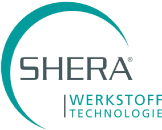








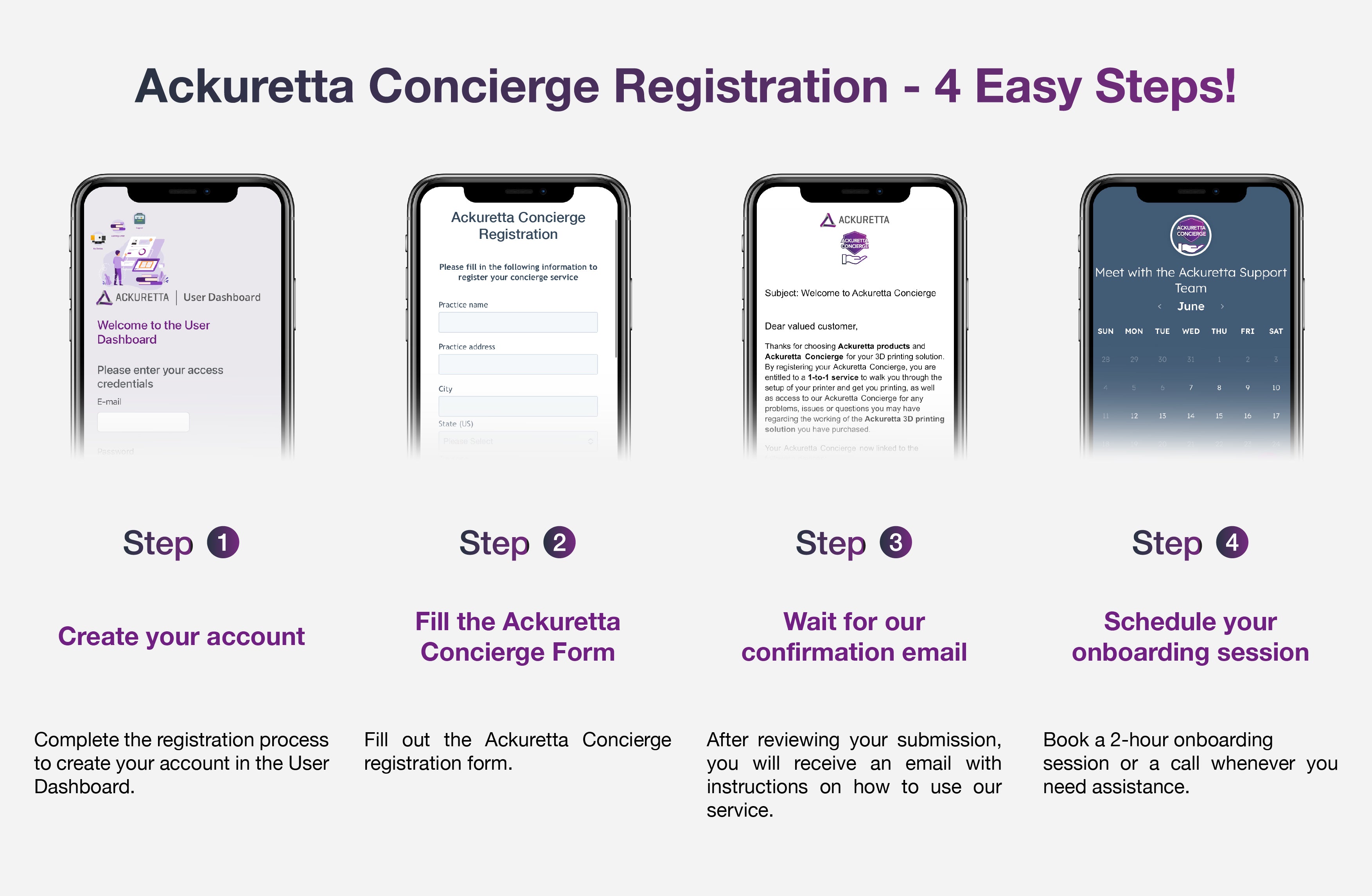






























 Loading ...
Loading ...
